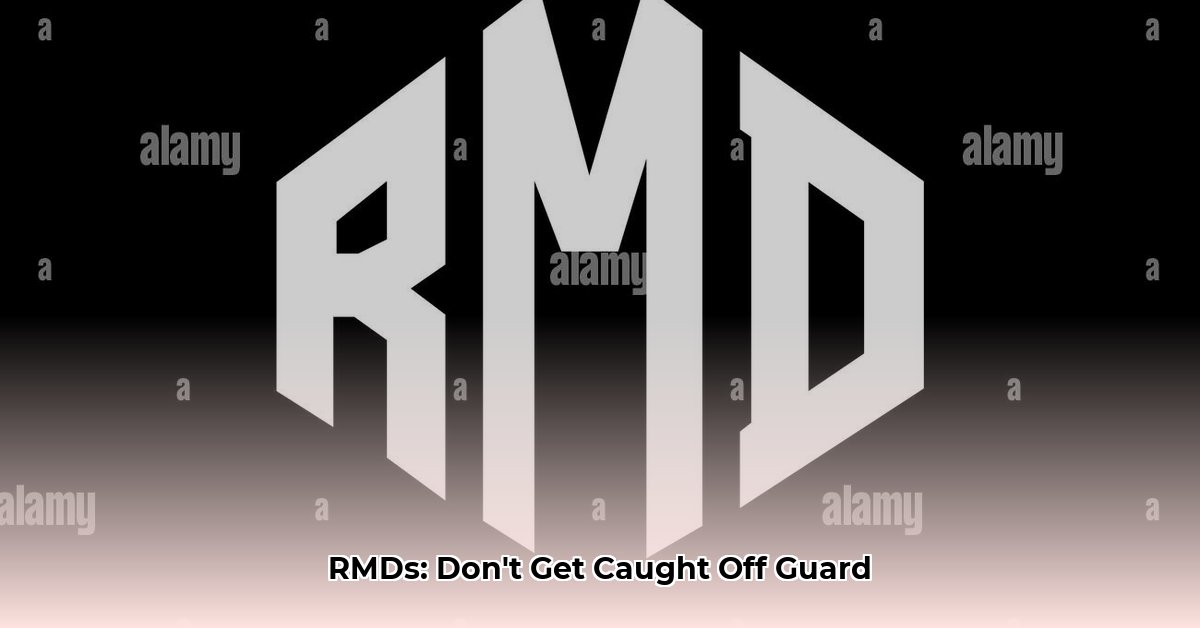Demystifying RMDs: What You Need to Know
Retirement accounts can be complex, and required minimum distributions (RMDs) often add to the confusion. This guide provides a clear roadmap to understanding these mandatory withdrawals. We’ll break down what RMDs are, when they begin, how to calculate them, and strategies to minimize their tax impact. Whether you’re approaching retirement or already enjoying it, this guide will empower you to navigate RMDs effectively.
When Do RMDs Begin?
Currently, the RMD age is 73, thanks to the SECURE Act 2.0. This is set to increase to 75 in 2033. This applies to most retirement accounts such as traditional IRAs, SEP IRAs, SIMPLE IRAs, 401(k)s, 403(b)s, and 457(b)s. A notable exception is the Roth IRA. Generally, you don’t need to take RMDs from a Roth IRA during your lifetime. However, future changes in legislation may alter this, so staying informed is crucial.
Calculating Your RMD
Calculating your RMD involves a straightforward formula: divide your retirement account balance as of December 31st of the previous year by your life expectancy factor. This factor, found in IRS Publication 590-B, https://www.irs.gov/forms-pubs/about-publication-590-b, is based on your age and may also consider your beneficiary’s age. It’s important to use the correct life expectancy table as prescribed by the IRS, as using the wrong table could lead to an inaccurate RMD calculation and potential penalties.
Example: Jane turned 73 in 2024. Her IRA balance on December 31, 2023, was $200,000. Her life expectancy factor (hypothetically, as factors change – consult the IRS tables) is 25.6. Her 2024 RMD is $200,000 / 25.6 = $7,812.50.
Life Expectancy Factor Nuances
The Uniform Lifetime Table is the standard for almost all RMD calculations. If, however, your spouse is the sole designated beneficiary, and they are more than 10 years younger than you, you might use the Joint Life and Last Survivor Expectancy Table. Consult the IRS tables or a financial advisor for complex cases.
Penalties for Missing RMDs
The penalty for missing an RMD is 25% of the undistributed amount, significantly reduced from the previous 50%. However, this is still a considerable sum. If you discover the missed RMD within two years of the deadline, you might be able to reduce the penalty to 10% by filing IRS Form 5329 https://www.irs.gov/forms-pubs/about-form-5329 and demonstrating reasonable cause. Even beyond the two-year mark, a waiver may be granted in certain situations. It’s crucial to address missed RMDs promptly and consult a tax advisor for specific guidance.
Minimizing Your RMD Tax Burden
While RMDs are taxable, several strategies can help mitigate the impact:
- Pre-RMD Withdrawals: Strategically withdrawing funds before RMD age could potentially reduce future RMD amounts.
- Roth Conversions: Converting funds to a Roth IRA eliminates future RMDs on the converted amount, albeit with upfront tax implications. While research suggests Roth conversions can be beneficial, especially with fluctuating tax rate projections, it’s crucial to assess individual circumstances. Ongoing economic and tax policy changes introduce uncertainty, so continuous reevaluation is vital.
- Qualified Charitable Distributions (QCDs): For those 70½ or older, QCDs allow direct transfers from your IRA to a qualified charity, excluding the amount from your taxable income up to a certain limit. This strategy may not be suitable for everyone, especially those anticipating significant future medical expenses potentially offset by higher itemized deductions.
- Delaying RMDs (for Still Working Individuals): If you’re still employed at 73 (or 75) and participating in a 401(k) or similar plan you don’t own, you might be able to defer RMDs for that specific plan until retirement.
RMDs and Inherited IRAs
Inherited IRAs have distinct RMD rules depending on your relationship to the original account owner and the type of IRA. Seeking professional advice is highly recommended in these situations. The SECURE Act introduced changes to RMD timelines for non-spouse beneficiaries, further adding complexity to the inheritance rules.
Seeking Professional Guidance
This guide provides general information. For personalized advice tailored to your situation, consult a qualified financial advisor. They can help you navigate the intricacies of RMDs, optimize your withdrawal strategies, and minimize your tax liability.
RMD Quick Reference Table:
| Account Type | RMD Required During Owner’s Lifetime? |
|---|---|
| Traditional IRA | Yes |
| 401(k) | Yes |
| 403(b) | Yes |
| Roth IRA | Generally No |
| Inherited IRA | Yes (Different Rules Apply) |
This table provides a general overview. Specific RMD rules can vary, and consulting a financial professional is always recommended.
- Hydro Extrusions USA Leads North American Aluminum Profile Solutions - December 28, 2025
- Hydro North America Leads Aluminum Extrusion Solutions Across Diverse Industries - December 27, 2025
- Hydro Extrusion North America Provides Custom Solutions Across Diverse - December 26, 2025















